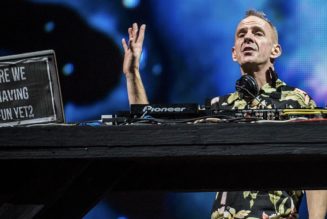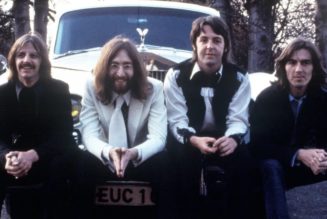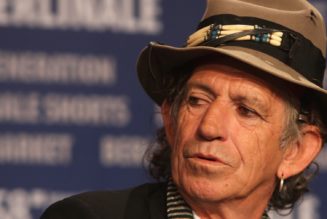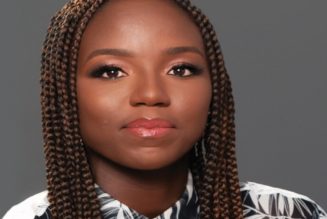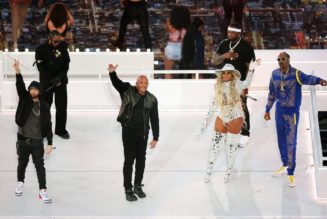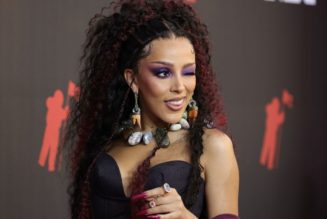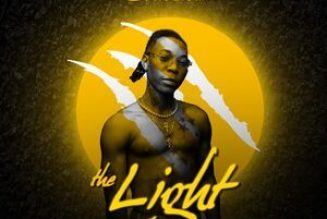How Far Can Amapiano Go?
It was opening night at the Brooklyn Mirage, a seasonal night club in East Williamsburg. In the main area, about five thousand people were bobbing and waving along with an English d.j. named Chris Lake, who played a set full of muscular and rubbery dance tracks, rarely straying for too long from the unifying thump of house music. At around two-thirty in the morning, just as the revellers were starting to sweat, a smaller and stranger dance party was getting going in a dark room off to the side. Banele and Bandile Mbere, twin brothers from South Africa, took to a small stage, plugged in their gear, and cued up a track that resembled an alien variant of the music being played outside. The sound was sparse, tense, and slightly menacing, with a bass line that cut in and out of the mix unpredictably; it could have been house music, except that there was a ghostly absence where the steady, orienting thump was supposed to be. People didn’t seem sure how, exactly, you were supposed to dance to this stuff. Near the stage, a few fans gathered to peer at the Mbere brothers, whose heads moved non-stop, swooping in time with the music, and with each other, as if they were the only people in the room who could hear that missing thump.
The Mbere brothers are known professionally as Major League Djz, and they are two of the most prominent exponents of the South African genre known as amapiano. In Zulu, amapiano means “the pianos,” or “piano people,” and the genre’s name refers to its origin as a jazzy variant of house music—at parties around Johannesburg and Pretoria, d.j.s would sometimes invite keyboard players to improvise chords over the beats. South African producers have been inventing new kinds of electronic dance music for decades, but social media has made it much easier for outsiders to hear what’s going on. In recent years, as the style has entrenched itself in South African clubs, amapiano snippets and dance videos have gone viral on TikTok and YouTube, which is also where the Mbere brothers found an international following. Around the time that the pandemic interrupted night life in South Africa and just about everywhere else, they began posting a series of d.j. sets on YouTube. Their videos, generally filmed in high definition on rooftops and at luxury hotels, emphasized not the strangeness of this music but its glamour and conviviality. New installments appeared as often as every week, drawing hundreds of thousands of views, or even millions, and turning Major League Djz into amapiano ambassadors.
Three weeks after the Brooklyn gig, Banele was sitting with his brother in the lobby restaurant of a South Beach hotel, preparing to face a much bigger and less confused crowd. The duo had flown to Miami for the inaugural American edition of Afro Nation, a two-day celebration of African music at LoanDepot Park, the home of the Florida Marlins. The worldwide rise of amapiano has been fuelled by the unprecedented explosion of global interest in African music. (A month ago, the Grammy Awards announced that next year’s ceremony will include a new category, Best African Music Performance; the official announcement mentioned a number of African styles, including amapiano.) And, in the world of Afro Nation, the brothers were headliners—and celebrities. “YouTube is, like, you can watch that thing naked in your room,” Banele Mbere told me. “So when people see us, it’s, like, ‘Is it really them? How did they get here?’ ”
When the brothers arrived at LoanDepot Park, a few hours later, they were dressed for the stage, in ostentatious high-end streetwear: Banele had on a distressed yellow-and-black plaid flannel shirt by Palm Angels, and Bandile wore a turquoise graffiti-print T-shirt by Balenciaga. They walked through the bowels of the arena to their dressing room, where Banele told a friend, “America is not as crazy as Europe.” But the crowd that met them at the amapiano stage, in a plaza next to the stadium, seemed plenty crazy enough: when the brothers appeared, people extended their arms for selfies, and other amapiano acts rushed forward to greet them. The party had been going for more than four hours already, and no one seemed confused about how to dance to the beat. A few people were wearing T-shirts based on a popular American shirt design; they said, “AMAPIANO VS EVERYBODY.”
The Mbere brothers say that their parents met at a notable South African musical event: the 1964 marriage of two of the country’s most beloved musicians, Hugh Masekela and Miriam Makeba. By the time the twins were born, in 1991, the family was living in exile in Boston, but they relocated to South Africa six years later, where both parents found work in the post-apartheid government: their mother, Musa, works for the Department of Social Development, and their father, Aggrey, who died in 2003, was the country’s Ambassador to Rwanda. At the Mbere brothers’ private high school, in Johannesburg, they threw parties, playing whatever their classmates wanted to hear. Sometimes that meant hip-hop, but sometimes it meant house music, which has rarely been far from the mainstream of South African pop.
House was born in Chicago in the nineteen-eighties, but it remains, even now, significantly more popular in South Africa than it is in America. (One latter-day Chicago house producer, Harrison Crump, who is little known in America, got such a warm reception in South Africa that he moved there.) In South Africa, the pulse of house music was transformed—and, often, decelerated. One of the country’s most influential producers and d.j.s is Oskido, who in the nineties remixed house records for his own compilations. “The beats per minute, they used to be one-twenty,” he once explained, in a documentary. “Maybe we just bring it down. The beats per minute, it becomes, say, one-fifteen, one-ten, because people here are more on a slow tip.” These slower beats paired well with slangy lyrics that were rapped or intoned, and this combination created a new genre, kwaito, which was just about as central to South African youth culture as hip-hop was in America—and, sometimes, just about as controversial. Oskido has said that he was once summoned to a meeting by President Nelson Mandela, who was concerned about the content of kwaito lyrics. “Siya Jola,” a memorable 1998 kwaito track by a producer known as M’du, began with a hint of intimidation (a sotto-voce plea, or warning: “Don’t make me wait”), although most of the lyrics are about a seemingly besotted couple on a date. The song has a loping beat with a simple bass line and an even simpler melody from a synthetic saxophone; somehow, this combination sustains a hypnotic groove for more than five minutes.
Kwaito waxed and then waned, but the influence of house music endured, and in the twenty-tens a new generation of South African producers and d.j.s found a different way to turn house music into something more particular. For a time, people called it “jazzy house,” which is a good enough description of the early tracks. It is clear, in retrospect, that a new genre was emerging by 2015, which was the year that the producer Junior Taurus and the singer Lady Zamar released an extraordinary single called “Mamelodi,” featuring the jazz act Odyssey 012. It’s a breezy, cleverly syncopated track with a chopped-up whistle sample and a piano solo that arrives, unexpectedly but propitiously, just after the halfway point. Djy Jaivane, a house d.j. from Soweto, was known for his mixtapes, which he distributed on USB sticks, or via unregulated upload sites like DataFileHost. “Amapiano, then, it was associated with kids—older people didn’t understand,” he told me. “People didn’t like amapiano.” DJ Maphorisa is one of South Africa’s leading producers; he helped produce “One Dance,” the 2016 smash by Drake featuring Kyla and the Nigerian singer Wizkid, which probably did more than any other song to galvanize a global audience for contemporary African pop. DJ Maphorisa embraced the emerging sound of amapiano, but he remembers that the genre name was originally pejorative, perhaps because of the music’s seeming monotony: long tracks, familiar chords, few lyrics. “Amapiano name came ass a diss,” he recalled, on Twitter.
In popular music, the word “jazzy” often suggests slickness and easy superficiality, but amapiano is defiantly jazzy—the endless moody chords set a hypnotic mood, and also help set the genre apart from more commercially minded forms of dance music. Fittingly, perhaps, its architects sometimes seem to be determinedly obscure. One of the most important figures in the genre is an enigmatic producer called Kabza De Small, who keeps a low profile despite releasing an astonishing torrent of music; newcomers looking for an entry point might begin with Kabza’s lovely and restless 2022 album “KOA II Part 1,” despite the unwieldy title (those initials stand for “king of amapiano”), and despite the fact that it is more than two hours long. He and DJ Maphorisa formed an amapiano supergroup, Scorpion Kings, and in 2021 they released “RUMBLE IN THE JUNGLE,” an elegant collaboration with a singer known as Tresor, an immigrant to South Africa from the Democratic Republic of Congo. Singers and rappers are equally welcome in amapiano, but never central to it, even though most of the most popular amapiano tracks feature some sort of vocalist. One of the genre’s breakthroughs was “Ke Star,” a collaboration between a rapper called Focalistic and an amapiano prodigy known as Vigro Deep, who had just turned nineteen when the song’s impossibly stylish video was released. Vigro, from Pretoria, is the son of a local house d.j., and he told me that he got his start on television, though not onscreen—he produced his early tracks by connecting a laptop to the TV in his bedroom, because those were the only speakers he could use. Costa Titch, a South African rapper with a taste for amapiano beats, was only starting to build an international reputation when he collapsed onstage and died this past March, at age twenty-eight.
The basic elements of amapiano are simple. You need something that sounds a bit like those egg shakers that drummers sometimes use. And you need what is known in FL Studio, the popular music-production program, as a “log drum”: a bassy “thunk” sound, loosely patterned on the hollowed logs that are used in many traditional forms of music—although not, particularly, South African ones. It’s not clear precisely when and how the log drum became a staple of South African electronic music, although some credit probably goes to M’du, the kwaito pioneer; the sound features prominently in a number of his classic productions, including “Siya Jola.” On typical house records, the low end approximates the rhythm section in a disco band: a kick drum supplies four steady thumps per bar; a bass line reinforces that beat, and sometimes swings against it. But amapiano producers realized that an electronic log drum, with its sharp attack and humming resonance, could serve as a kick and a bass simultaneously. In an amapiano track, the shakers usually keep time while the log drum darts in and out of the mix, as if the beat itself is playing a solo. Dancers can react to these rhythmic digressions with kicks and shimmies of their own—but only, of course, if they know what they’re doing.
In the story of amapiano, the Mbere brothers have played the role of popularizers. They throw great amapiano parties by playing great amapiano records, many of them created by other people. As the pandemic lockdown ended, the brothers travelled to the U.K. and beyond, finding a place on the international d.j. circuit. Last year, they performed at Coachella, the California festival, fulfilling a kind of prophecy that they made back in 2020, when they released an album called “Pianochella!” (it is has since been renamed “Pianonation!”), and they are now signed to Atlantic Records. One of their many fans is the American hitmaker Diplo, a connoisseur of global dance music, who recorded a Balcony Mix with them, and then, with his group Major Lazer, a collaborative album, “Piano Republik,” which arrived in March; one track features Ty Dolla $ign, the R. & B. singer, and another is based on a snippet of an old hit by Brenda Fassie, the beloved South African pop star who died in 2004, and who never really had a chance to break through in America.
The most extraordinary thing about amapiano is the way it combines the steely precision of minimalist electronic music with the exuberance of older forms of South African pop. By the time Major League Djz took the stage in Miami, the plaza was full of revellers, some of them waving flags: the South African flag, of course, but also those of Ghana, Kenya, Botswana, and even Eswatini, the tiny kingdom that used to be known as Swaziland. The set felt like both a celebration and a statement of purpose. When Banele Mbere cued up an amapiano favorite from 2021 called “Adiwele,” Bandile Mbere got up on the table with a microphone and a bottle of tequila to conduct a sing-along, as the sound of log drums reverberated through the plaza and out into the parking lot. The crowd might have been happy to hear Major League Djz play all night, but the set lasted only about an hour, after which the brothers headed back into the stadium’s hallways, where they posed for pictures, signed the contract that would get them paid, conducted an impromptu video interview, and headed out onto the converted baseball field, where they had conversations with a couple of security guards, sent some text messages, and made some calls. Wizkid, the Nigerian star, was about to perform, and the Mbere brothers were trying to figure out how to get next to the stage.
In the early days of hip-hop, vocalists were the hired help, not the main attraction; before he was a movie star, Will Smith got second billing in his own duo, DJ Jazzy Jeff & the Fresh Prince. Before long, of course, rappers took over, supplying lyrics and personality while demanding the spotlight. Is something similar happening to amapiano? In 2021, a performer named Goya Menor went viral with “Ameno Amapiano (Remix),” a hit that revolves around a gruff question, which for some reason became a TikTok earworm: “You want to bamba / You wanna chill with the big boys?” Goya is not a South African producer but a Nigerian rapper and singer, and the song’s success was a sign that a proudly South African genre was taking root in Nigeria, the undisputed capital of African pop. Since then, Nigerian stars have routinely adopted the sounds of amapiano. The singer-songwriter Davido appeared on a remix of “Ke Star,” turning it into one of the most popular amapiano songs to that point. Wizkid’s most recent album includes an amapiano track called “Bad to Me.” And when Burna Boy, the stadium-filling kingpin of African pop, collaborated with the English singer Ed Sheeran, the result was “For My Hand”; listen closely and you will hear the telltale “thunk” of a log drum. Most audacious of all is Asake, who became last year’s biggest Nigerian success story with “Mr. Money with the Vibe,” a début album powered almost entirely by amapiano; a few weeks ago, he released “Work of Art,” a similarly infectious album that features a log drum on nearly every track. One of the songs on it has a title that is simple and perhaps incendiary: “Amapiano.” On Saturday night in Miami, on the main stage, Asake performed it live for perhaps the first time, offering himself as the Nigerian voice of a South African style: “Amapiano / We go show / We go let them know.”
In Miami, the amapiano stage was programmed and run by Piano People, a promotional company dedicated to African music that organizes amapiano parties and tours in the U.K. and abroad. Melissa Penny is the brand manager of Piano People, and she had flown from the U.K. to Miami to keep the Piano People stage running smoothly. It was, by a long distance, the most impressive gathering of amapiano talent in American history: Focalistic was there, as well as Uncle Waffles, a d.j. and dancer whose moves capture the playful energy of the genre, and DBN Gogo, a producer who made two appearances on the soundtrack of “Black Panther: Wakanda Forever.” (Her tricky, spiky productions conjure up a place even more futuristic than the fictional African nation depicted in the film.) Penny pays close attention to these amapiano successes, although she concedes that part of what she loves about the music is its disinclination to compromise. “ ‘This is my new album, and the first track is seven minutes,’ ” she told me, affectionately paraphrasing the spirit of the genre. “If you’re not ready to take it in, then it’s not for you.”
Last year, while Asake was riding high, DBN Gogo issued a warning via Instagram Stories, seemingly responding to his début album, and aimed at her fellow South African artists:
Bandile Mbere wrote that he agreed with her, adding a thought that was both conciliatory and provocative: “BIGGEST AMAPIANO IS ASAKE 
An earlier version of this article incorrectly described the Brooklyn Mirage.
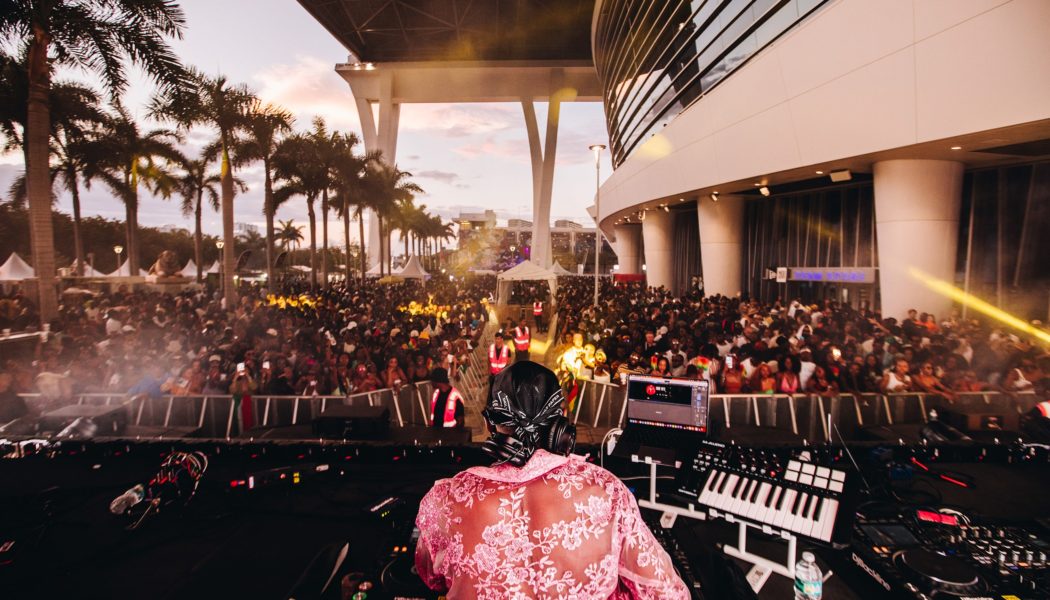
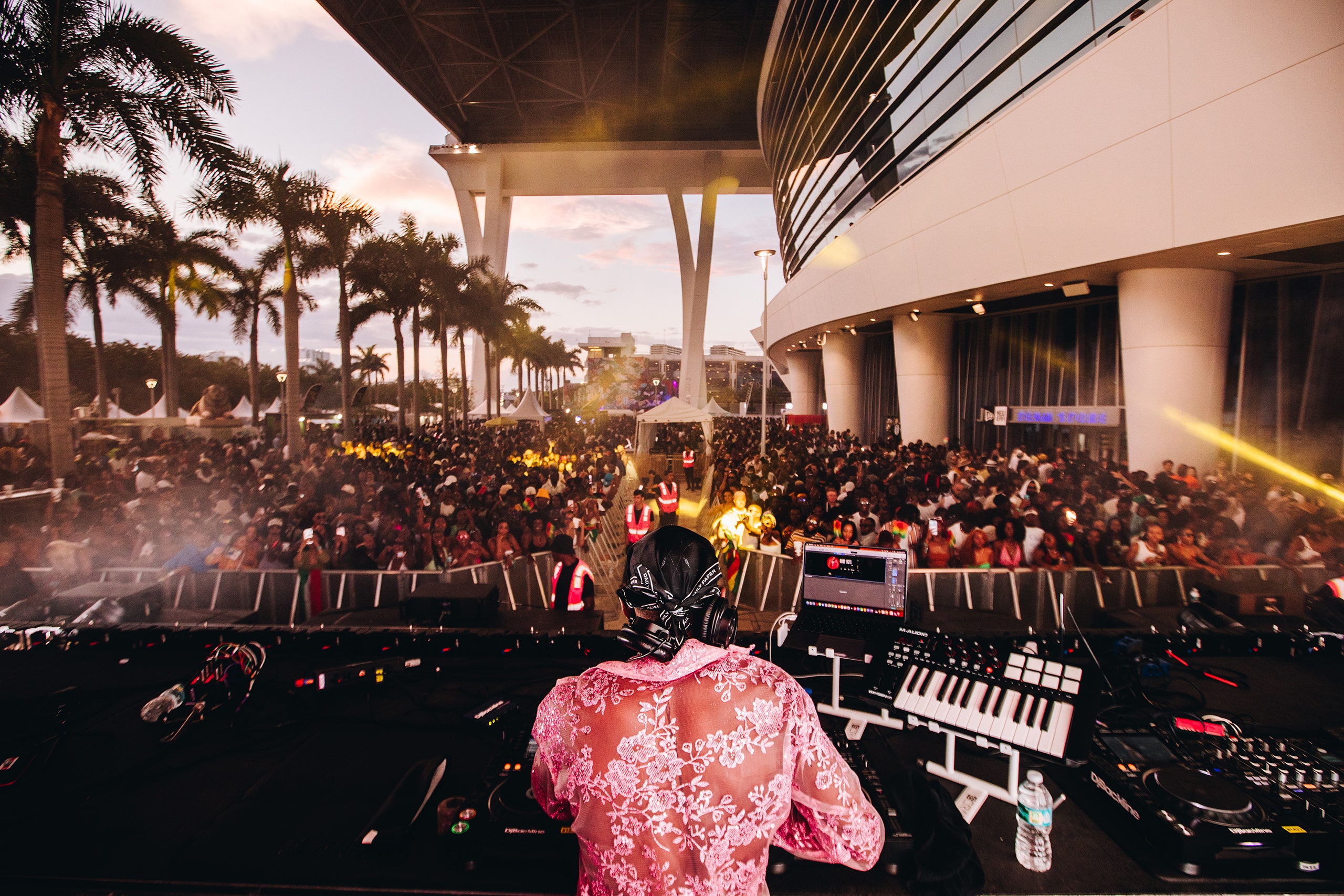

 iyho. That’s the problem.
iyho. That’s the problem.